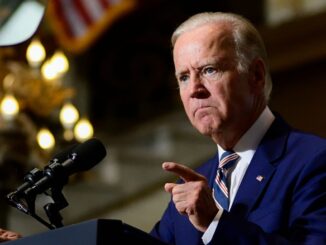
Governor Kathy Hochul’s Executive Budget proposal (the Transportation, Economic Development, and Environmental Conservation budget bill (A.8808/S.8308)) includes two pivotal energy proposals: the Renewable Action Through Project Interconnection and Deployment Act and the Affordable Gas Transition Act. The Governor is seeking to advance the achievement of the ambitious emissions reduction and renewable energy procurement mandates set forth in the landmark Climate Leadership and Community Protection Act (CLCPA). This post summarizes the key provisions of these proposals and discusses their potential impact on New York’s energy landscape.
The Renewable Action Through Project Interconnection and Deployment (RAPID) Act
The RAPID Act proposes to streamline the environmental review and permitting of major renewable energy generation and electric transmission facilities. It would centralize these efforts within the Office of Renewable Energy Siting (ORES) at the Department of Public Service (DPS). Ultimately, the RAPID Act would create a “one-stop shop” within ORES for permitting necessary to site both major renewable energy facilities and the major electric transmission facilities that support them.
One of the major proposals of the RAPID Act is the transfer of jurisdiction over the siting of electric transmission facilities, currently overseen by the Public Service Commission (PSC), to ORES. The RAPID Act would also relocate ORES from the Department of State to DPS for administrative and organizational efficiency. Notably, ORES will retain control over the permitting process for major renewable facilities, and the Commission itself would not be involved in the permitting approval process.
The RAPID Act would require ORES to promulgate regulations and adopt uniform permit terms and conditions for major electric transmission facilities within 18 months of the bill’s enactment. Applicants that have initiated the Article VII process may opt into the new process under ORES. The RAPID Act borrows largely from Article VII, the existing PSC process for approving transmission lines, in establishing the information that would be required in the siting application. Notably, the RAPID Act would dispense with the current requirement that an application assess reasonable alternative locations for the proposed facility. Additionally, the RAPID Act would empower ORES to exempt transmission projects that use an existing right-of-way from the application requirement. To further expedite the application process, the RAPID Act would automatically grant a siting permit if ORES has not made a decision about the permit within one year of the transmission application being deemed complete, unless ORES and the applicant have agreed to an extension, or a right-of-way agreement has not been secured.
Affordable Gas Transition Act (AGTA)
While the RAPID Act focuses on supporting renewable electricity infrastructure development, AGTA represents the Hochul Administration’s attempt to facilitate a transition away from natural gas. AGTA would overhaul the New York Public Service Law and other statutes governing natural gas service to facilitate the transition away from natural gas and towards renewable electric alternatives. Specifically, AGTA would include the achievement of the state’s CLCPA goals within the state’s gas, electric, and steam service policy, eliminate the “100-foot rule,” ending the practice of having utilities fund new gas hookups out of its rate base rather than charging the individual customer, and revisit the “obligation to serve” customers who seek a new gas hook-up. Notably, the legislative findings state that AGTA would not ban the use of natural gas or require an immediate transition away from natural gas. However, AGTA endeavors to decelerate further expansion of the natural gas system.
AGTA appears to have been offered as a counterproposal to the NY HEAT Act (A.4592B/S.2016B), a more aggressive gas transition proposed by certain legislators that would significantly limit future expansion and use of natural gas in the state.
The RAPID Act and AGTA are further evidence of how the CLCPA and its zero-GHG mandates have changed the public policy landscape in New York, with an increasing focus on the need to quickly move forward with the renewable generation and transmission projects necessary to transition to zero-carbon emission electricity market. In transferring transmission projects to ORES and proposing an expedited siting process, the RAPID Act attempts to align project timing on both the generation and transmission sides, thereby facilitating renewable generation in furtherance of the CLCPA. If the RAPID Act is enacted, sufficient allocation of staffing and administrative resources to ORES will be critical to support the amount of work that ORES will undertake, and a strategic transition plan for transferring responsibilities from DPS to ORES will also be important to ensure seamless implementation.
The New York State Senate and Assembly will release their legislative one-house budget proposals in March, and the houses’ position on the RAPID Act and AGTA will give greater insight into whether the Legislature is likely to enact some version of these bills. Regardless of the outcome, Governor Hochul’s decision to propose both the RAPID Act and AGTA highlight her continued efforts to achieve the aggressive clean energy targets enacted by the CLCPA.



